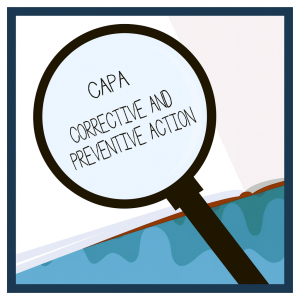Clinical trials are complex, high-stakes endeavors, and even small missteps in logistics, coordination, or vendor performance can lead to costly delays. That’s why internal audits for clinical trials compliance and risk management are so important. They’re not just about checking boxes or satisfying regulatory requirements; they’re about understanding how your systems actually function under pressure.
A well-designed internal audit program helps organizations identify vulnerabilities early, improve operational consistency, and build confidence across teams and sponsors. When done right, audits become a proactive tool for managing risk and keeping trials on track.
This blog highlights Imperial’s established internal audit practices and the valuable insights we gleaned during our recent quality management system review, which included training support from the quality systems advisory firm PMN Group. Their outside perspective, led by Jim Johnston, Imperial’s contract responsible person and a former UK Medicines & Healthcare products Regulatory Agency (MHRA) Good Distribution Practice (GDP) inspector, helped validate our strategy and sparked fresh thinking around vendor oversight and GDP compliance. These contributions strengthened our internal framework and reinforced Imperial’s longstanding commitment to continuous improvement.
Benefits of Internal Audits for Clinical Trials
Internal audits for clinical trials shine a light on the processes that matter most—those that shape clinical trial integrity, safeguard patient safety, and ensure regulatory compliance. These are the systems that generate critical data, support key deliverables, and carry the weight of operational trust. Auditing them isn’t optional; it’s essential to running resilient, inspection-ready clinical studies.
Internal audits are also one of the most effective tools for managing risk across the clinical supply chain. When planned thoughtfully and executed with care, audits help organizations anticipate issues before they escalate, reduce costly delays, and strengthen vendor oversight. They also reinforce a culture of continuous improvement. Whether you’re stress-testing your processes or refining your quality management system, internal audits offer a clear path to smarter decisions and stronger outcomes.
Putting the Internal Audit Team Together
Building an effective internal audit team starts with selecting individuals who bring both technical expertise and a mindset geared toward continuous improvement. Whether audits are conducted by a single auditor or a team, the scope and complexity of the audit should guide the structure.
Team members should have formal audit training, and their skills should be assessed by qualified personnel to ensure consistency and credibility. It’s also important to include individuals with working knowledge of relevant regulations and operational processes. A mix of backgrounds helps uncover blind spots and strengthens findings.
Beyond credentials, the best auditors bring a set of core skills:
- Analytical thinking
- Clear communication
- Active listening
- Curiosity
- Collaboration
- Integrity
These qualities help transform audits from routine checks into strategic tools for identifying risk, improving processes, and supporting long-term clinical trial success.
In some cases, the right audit personnel may not exist within your organization. That’s not a barrier; it’s a signal to plan ahead. Consider identifying external auditors with relevant experience or partnering with vendors who offer qualified audit support. The goal is objectivity, technical rigor, and alignment with your quality goals.
Your Internal Audits for Compliance and Risk Management Plan
A well-constructed audit plan doesn’t just outline what to check. It reflects how your organization prioritizes risk, allocates resources, and aligns quality efforts with business goals. Before any audit takes place, it’s essential to define what you’re auditing, why, and how.
Business objectives should inform your audit priorities. If your organization sets strategic goals, consider how your audit plan can support or stress-test those initiatives. And don’t overlook practical constraints: time, team availability, holidays, and experience levels all factor into how and when audits can be conducted effectively.
Start by identifying the areas and activities most critical to your operations. Your plan should reflect the size and scope of your business, but also the complexity and variability of your processes.
Look to where risk lives. This might include sites that warrant attention, vendor oversight, training records, temperature excursions, investigational product handling, and documentation practices tied to GDP. These areas often intersect with regulatory expectations and operational complexity, including principles from ICH e6(R2) guidelines, making them prime candidates for closer scrutiny.
And pay close attention to areas that seem routine. Even well-established workflows can drift over time, especially when teams are stretched, procedures evolve without full retraining, or key team members change.
Once the risk assessment is complete, build your internal audit schedule. This typically spans a full calendar year and is organized by business area or activity. The schedule should be realistic, visible to the audit team, and flexible enough to accommodate shifting priorities.
Pre-Audit Preparation: Setting the Stage for Internal Audits for Clinical Studies
Preparation is key to a productive audit. Begin by clearly defining the scope, purpose, and schedule. What are you trying to learn or validate? Which procedures fall within scope? Mapping out a schedule of events helps ensure that everyone involved knows what to expect and when.
Next, conduct a thorough review. This includes researching current guidance, consulting subject matter experts if needed, and revisiting previous audits, inspections, or deviation reports. Historical findings often point to recurring issues or areas that need closer scrutiny.
Scheduling logistics is also important. Block out time for pre-work, the audit meeting itself, and the post-audit write-up. This ensures that findings are documented promptly and accurately, while the context is still fresh.
Finally, review relevant records. These should be requested at least five working days before the audit meeting to allow adequate time for analysis. Focus on records generated during the process or activity within scope because they offer the clearest window into how things actually operate.
The Auditee
Internal audits for compliance and risk management aren’t conducted in isolation. They rely on the insight and cooperation of the auditee: the individual or team whose process is being reviewed. This is typically the process owner or someone directly involved in executing the work under review, whether that means managing documentation, overseeing vendor relationships, handling investigational products, or maintaining training records. This can include site coordinators, quality leads, project managers, clinical operations staff, or regulatory affairs specialists—anyone with firsthand knowledge of how the process runs.
These are the people who can walk you through how things actually operate day-to-day. They can explain why certain steps are taken, clarify decision points, and help identify where improvement might be possible. The audit meeting is your opportunity to engage them not just as a subject of review, but as a collaborator in strengthening the process.
Conducting the Audit: Skills, Structure, and Strategy
Internal audits for clinical trials begin with a records review. This includes training records, process-generated documentation, and verification that records are stored appropriately. Compare the records to the process itself. Your review should focus on completeness as well as alignment with good documentation practices and ALCOA+ principles.
ALCOA+ is a cornerstone of data integrity and the standard by which clinical documentation is judged. It is a shared framework across audits, inspections, and regulatory reviews. The acronym stands for:
- Attributable: Traceable to the individual or system that generated it
- Legible: Clear and readable
- Contemporaneous: Recorded at the time of the event
- Original: The original record or certified true copy
- Accurate: Free of errors and reflects the actual facts
The + signifies the extended principles that ensure data is reliable, durable, and accessible for inspection:
- Complete: Includes all data, not only what supports the final outcome
- Consistent: Data is sequential and time-stamped appropriately
- Enduring: Records are retained and protected
- Available: Data can be easily retrieved for review or inspection
During the audit meeting, an open discussion sets the tone. Explain the purpose and scope of the audit, and invite the auditee to walk through the process in their own words. Use open-ended questions to gain clarity, understand rationale, and identify areas for improvement. Active listening is key. It builds trust and helps surface insights that might not appear in documentation alone.
Auditors should record observations in real time, noting evidence and attaching supporting materials as needed. Findings are typically classified as Critical, Major, Minor, or Opportunities for Improvement (OFIs). This classification structure aligns with widely recognized frameworks, including ISO inspection practices. During the closeout meeting, findings should be discussed with the auditee, along with a clear explanation of how classifications are determined to ensure consistency and shared understanding.
Reporting and Follow-Up for Internal Audits for Clinical Trials
Audit reports should be completed promptly, ideally within five working days, and shared with relevant process owners. Timely reporting ensures that findings are actionable and that corrective steps can begin without delay.

For any critical, major, or minor findings, a Process Deviation Report (PDR) should be raised. This formalizes the issue and initiates the Corrective and Preventive Action (CAPA) process. While process owners are responsible for implementing changes, the audit team plays a key role in tracking progress, maintaining records, and repeating audits as needed to verify success.
According to Six Sigma, the CAPA method identifies steps to determine the root causes of issues, fix current problems, and prevent future ones. The steps are to:
- Perform a thorough root cause analysis to identify the cause(s) of the issue.
- Develop and implement a corrective action plan to address the root cause(s).
- Verify the plan’s effectiveness and revise as needed.
- Update procedures, work instructions, training, etc., to incorporate the applicable elements of the corrective action plan.
- Close the corrective action once it has been determined to be effective.
Top 5 Internal Audit Pitfalls and How to Avoid Them
Internal audits for compliance and risk management are most effective when they’re strategic, consistent, and human-centered. Here are five common pitfalls to watch for, and how to avoid them.
- Skipping “what good looks like.” Audit planning should begin with a clear picture of risk, current guidance, and client expectations. Knowing what success looks like arms the auditor for a focused, effective conversation.
- Closed questions, guarded answers. An audit meeting should be a conversation. If your auditee seems guarded, consider whether your tone or framing could be the cause.
- Failing to follow through. Internal audits are only beneficial if we act on our findings. Complete audit records should include follow-through, especially CAPA plans when needed.
- Letting flexibility override standards. Planning your audit schedule around peak holiday times is good practice. Letting CAPA plans slide because “we are too busy” leads to further findings in the future.
- Failing to celebrate your wins! Internal audits are an opportunity to catch people doing the right thing. Sharing good practices and improvement ideas across the team drives innovative thinking, growth, and learning.
Internal audits for clinical studies aren’t just a regulatory requirement—they’re a strategic advantage. When built thoughtfully and executed with care, they help clinical teams stay ahead of risk, strengthen operational integrity, and deliver trials that are both compliant and resilient. That’s not just good practice—it’s good science.
Thanks again to Jim and the PMN Group, whose outside perspective helped complement our experienced approach and deepen my thinking—echoes of their contribution run through some of the wisdom above.

